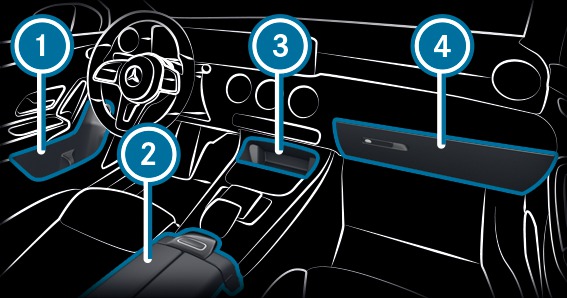When you load the roof, the centre of gravity of the vehicle rises and the usual driving characteristics as well as the steering and braking characteristics change. During cornering, the vehicle tilts more strongly and may react more sluggishly to steering movements.
If you exceed the maximum roof load, the driving characteristics, as well as the steering and braking characteristics, will be greatly impaired.
The vehicle could be damaged by roof racks which have not been tested and approved by Mercedes-Benz.
The panorama sliding sunroof may be damaged by the roof rack if you attempt to open it when using a roof rack not tested and approved for Mercedes-Benz.
The panorama sliding sunroof may be raised to allow ventilation of the vehicle interior.
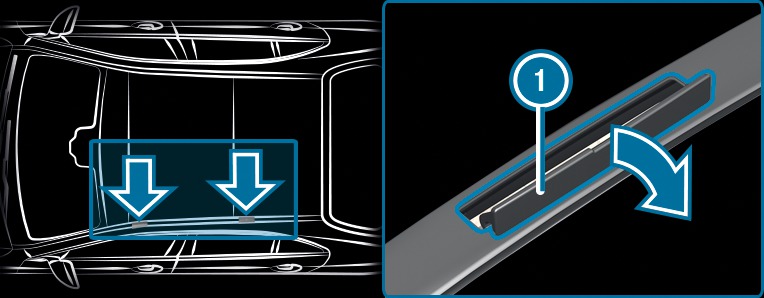
The covers may be damaged and scratched when being opened.
 upwards in the direction of the arrow.
upwards in the direction of the arrow.  .
. If the rear bench seat/rear seat and seat backrest are not engaged they could fold forwards, e.g. when braking suddenly or in the event of an accident.
If this is the case, the vehicle occupant would be forced into the seat belt by the rear bench seat/rear seat or by the seat backrest. The seat belt cannot protect as intended and could result in additional injury.
Objects or loads in the boot/load compartment cannot be restrained by the seat backrest.
If the seat backrests are not engaged and locked in place, the lock verification indicator will be red.
To fold forward the middle seat backrest: the middle seat backrest has been unlocked.
The centre and outer seat backrests can be folded forwards.
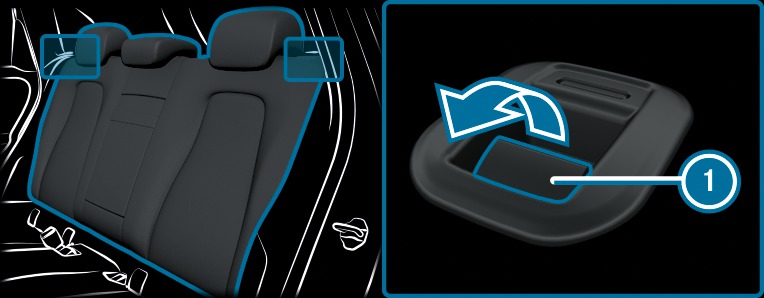
 .
. 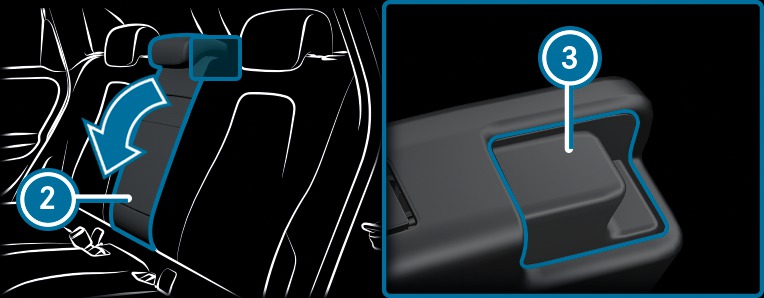
 of seat backrest
of seat backrest  forwards.
forwards. If the rear bench seat/rear seat and seat backrest are not engaged they could fold forwards, e.g. when braking suddenly or in the event of an accident.
If this is the case, the vehicle occupant would be forced into the seat belt by the rear bench seat/rear seat or by the seat backrest. The seat belt cannot protect as intended and could result in additional injury.
Objects or loads in the boot/load compartment cannot be restrained by the seat backrest.
The seat belt could become trapped and thus be damaged when the seat backrest is folded back.

 back until it engages.
back until it engages. Left and right seat backrest: if the seat backrest is not engaged and locked, the red lock verification indicator  will be visible.
will be visible.
Centre seat backrest: if the seat backrest is not engaged and locked, the red lock verification indicator  will be visible.
will be visible.
If you drive when the load compartment floor is open, objects could be thrown around and thereby strike vehicle occupants. There is a risk of injury, particularly in the event of sudden braking or a sudden change in direction.
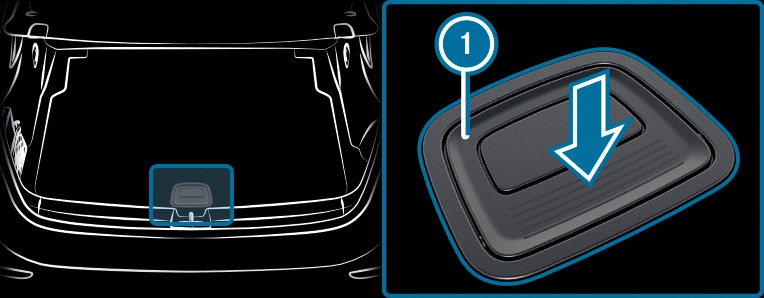
 upwards.
upwards.  .
.  down until it engages.
down until it engages. If the ball neck is not engaged, the trailer may come loose.
The ball neck may swing outwards when unlocking or when it has not been properly engaged.
There is a risk of injury within the ball neck's range of movement!
The vehicle is secured against rolling away.
The swivel range is clear.
The trailer cables or adapter plugs have been removed.
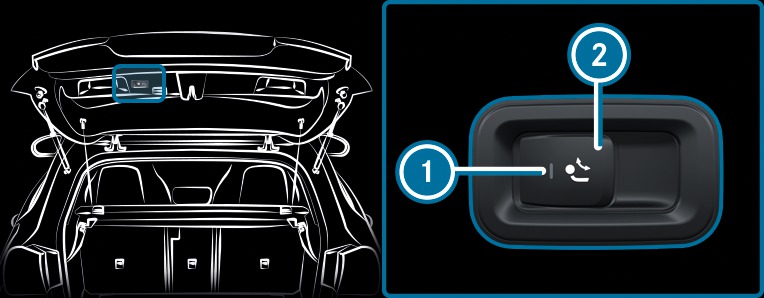
 until the ball neck unlocks.
until the ball neck unlocks. The ball neck will fold out from under the rear bumper.
Indicator lamp  will flash.
will flash.
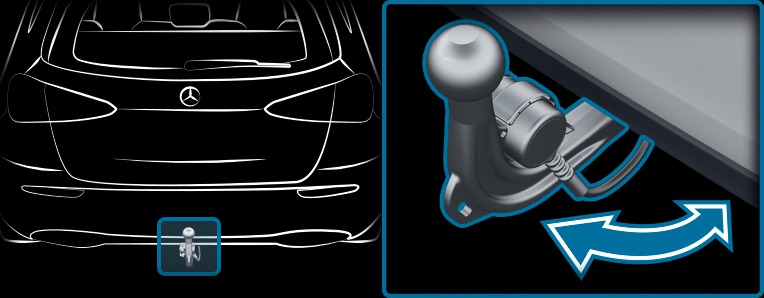
Indicator lamp  on the ball neck release switch will go out.
on the ball neck release switch will go out.
If the ball neck is not securely locked in place, the Trailer coupling Check lock display message will appear on the multifunction display.
Make sure that the ball on the ball neck is clean. Check that it is either greased or dry (grease-free), depending on the instructions for the trailer.

 until the ball neck unlocks.
until the ball neck unlocks. The ball neck will fold up under the rear bumper.
Indicator lamp  will flash.
will flash.
Indicator lamp  will go out and the message on the multifunction display will disappear.
will go out and the message on the multifunction display will disappear.
Observe the notes on loading the vehicle More.
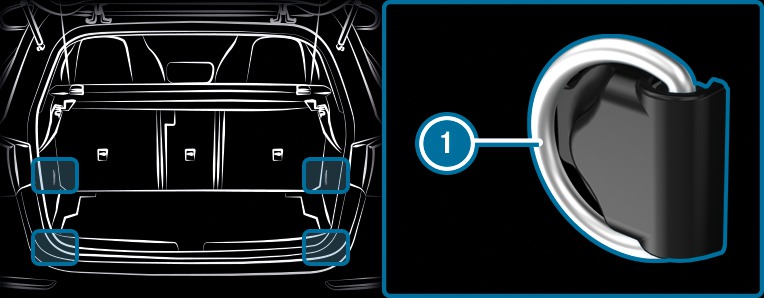

If objects in the vehicle interior are stowed incorrectly, they can slide or be thrown around and hit vehicle occupants. In addition, cup holders, open stowage spaces and mobile phone receptacles cannot always retain all objects they contain.
There is a risk of injury, particularly in the event of sudden braking or a sudden change in direction.
Observe the notes on loading the vehicle.
